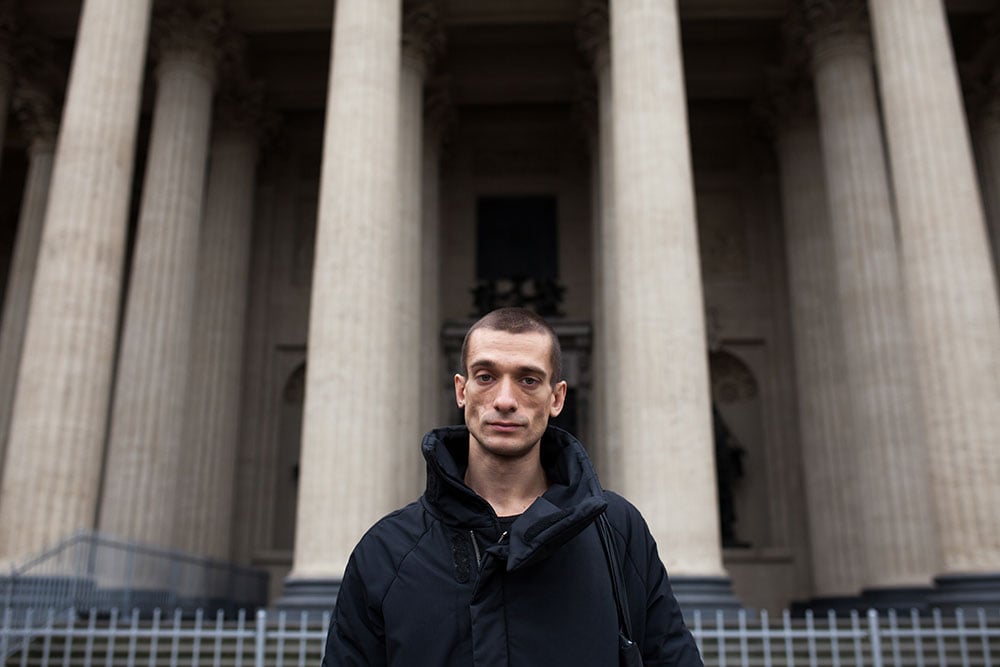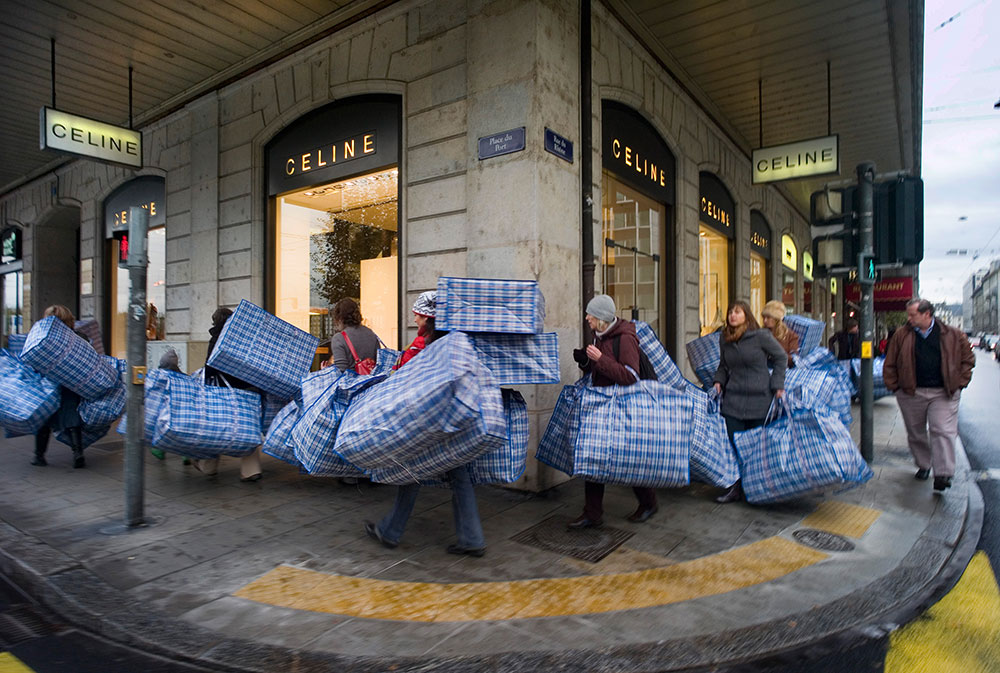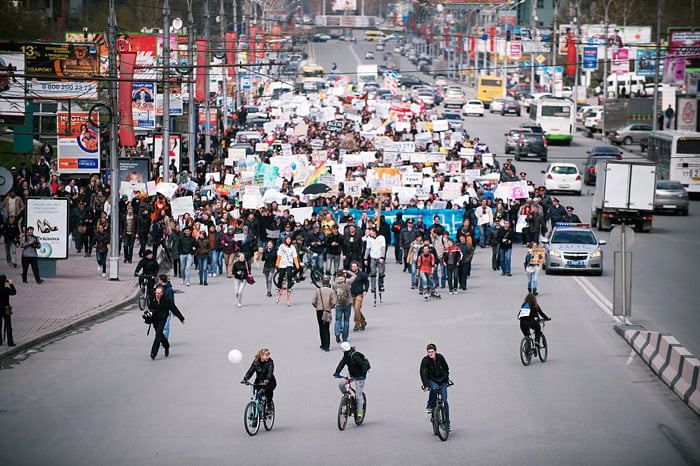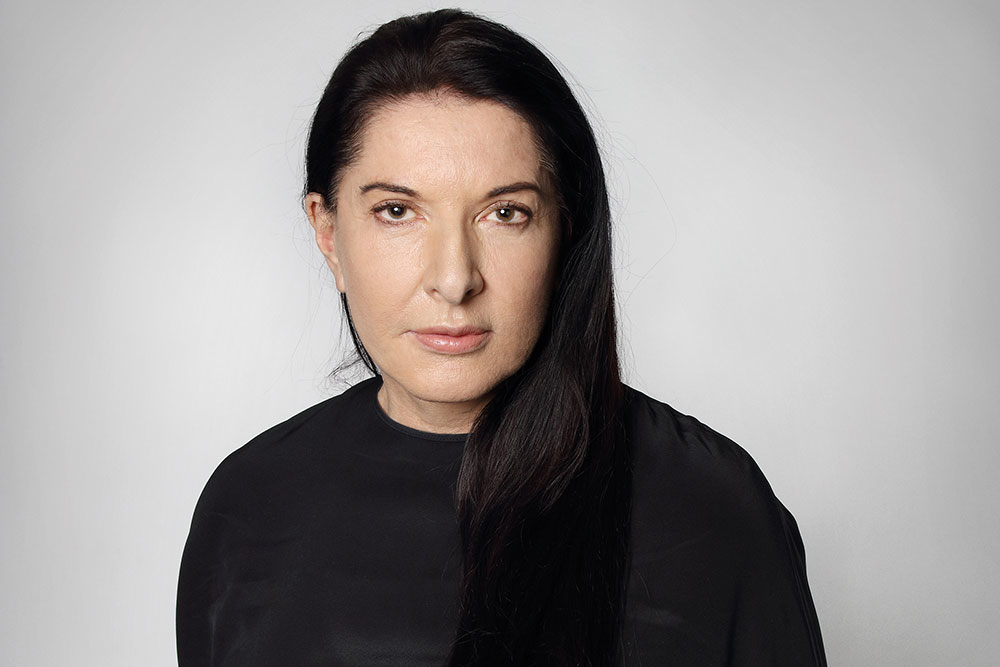All made up: painted bodies in performance art since perestroika
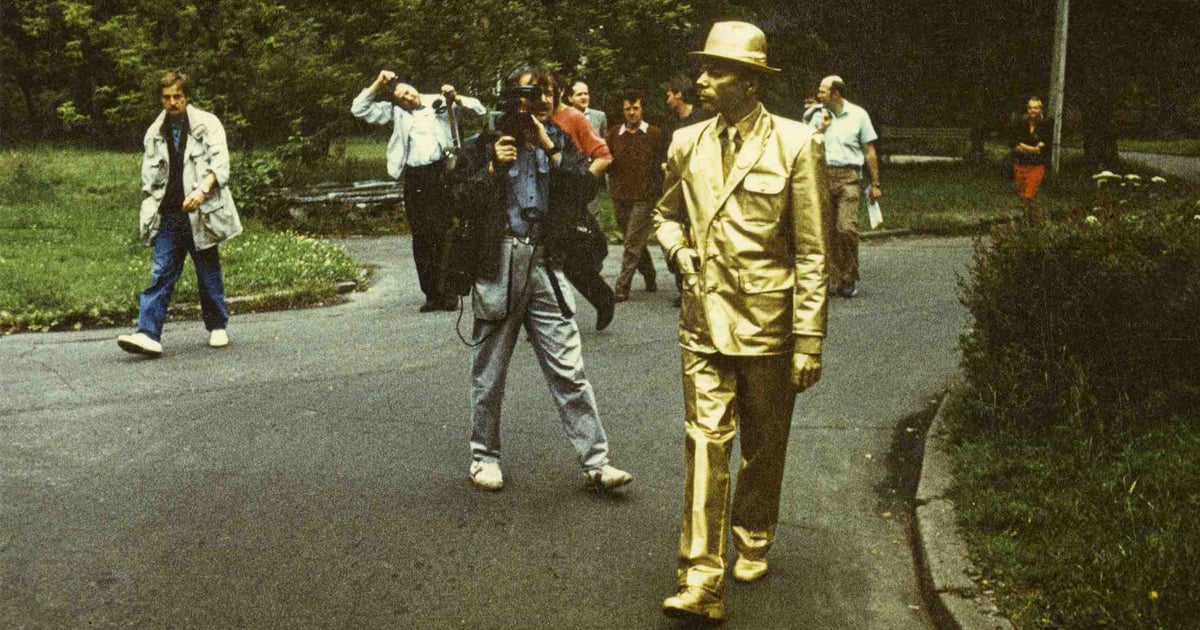
Body painting has been a theme in eastern European performance art ever since Miervaldis Polis walked around Riga as a Bronze Man in 1987. Amy Bryzgel traces the development of the phenomenon and its shifting meanings over time
The sight of a man or woman painted all in bronze, silver or gold is not an unusual one on the streets of Paris, Berlin or London nowadays. These everyday buskers get into costume and strike a pose every time a coin is dropped in their hat. Long before such street performers could ever be a possibility in Soviet Latvia, where private enterprise was discouraged, in 1987, Latvian artist Miervaldis Polis (b. 1948) put on a bronze suit and bronze hat, and painted his face and hands bronze. He took the bus from his apartment on the outskirts of the city centre, and proceeded to walk around the center of Riga, observing others’ reactions, never speaking. He had pre-arranged with a café owner to enter a café, drink a bronze drink (apple juice) and smoke a bronze-painted cigarette.
By the end of his walk he had attracted a large group of followers, and had to duck down a side street to escape the attention, before returning home. Some onlookers thought that the artist was imitating Lenin — in fact, there was a large statue of Lenin in the center of Riga, just as in every other Soviet city — and the KGB therefore suspected the artist was mocking the leader of the workers’ revolution. Although the artist wasn’t questioned about the matter, the bus driver who drove him to the city center was, and although he knew nothing about the performance, he defended Polis and denied the accusation that the artist was mocking Lenin. For Polis, the performance was a reference to the tendency of man to glorify all leaders in bronze, which human beings have been doing so since the time of Ancient Greek civilization, and not just the ubiquitous bronze statues dotting Soviet cities.
Throughout the years, a number of other painted bodies have appeared on the streets of Eastern Europe, but the fall of the USSR created new meanings for these strange figures.
Welcome, Dear Workers!, Tirana, 2005” src=”https://www.new-east-archive.org/images/uploads/articles/05-16/Painted_bodies/2.22.1_Cenaliaj_Welcome.jpg” style=“width: 667px; height: 1000px;” />
The workers, however, didn’t feel welcomed by Cenaliaj’s performance. The reaction was strong: 20 years after the fall of the communist government in Albania, they commented: “We don’t need any more statues.” Some children threw stones. The locals, the intended audience, didn’t understand the context, and weren’t necessarily familiar with the phenomenon of performance art.
The artist had been motivated to create the performance following the changes she noticed in this working class area of Tirana after the fall of communism, an area that had once been for workers, and was now becoming a new commercial centre; although it no longer produced textiles, it was still called a textile factory. The disconnect between the business owners and the workers was striking, as well, given the concerns of the former, which were solely for profit. The performance drew attention to, and demanded recognition of, the working people who not only depend on this area for their livelihood, but in fact make it what it is. It also draws a parallel between the treatment of workers under the communist system and the current neoliberal capitalist one, highlighting one area where workers perhaps fare worse rather than better under the new system.
